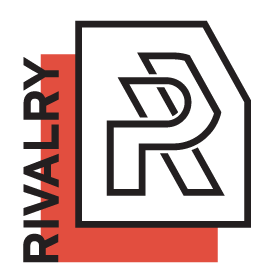QSL
LUCY HELTON + JASON E GEISTWEIDT
Project Space
Exhibition Dates:
March 3, 2023 - April 21, 2023
Opening Reception, March First Friday:
Friday, March 3, 2023, 5:00-9:00pm
Artist Talk:
Saturday, March 4 @ 11:00am
Rivalry Projects is delighted to present QSL is a mixed media installation by Lucy Helton and Jason E Geistweidt. This exhibition is on view March 3-April 21, 2023. Join us for an Opening Reception for this exhibit on First Friday, March 3, 2023 from 5:00-9:00 PM. The artists will be speaking about this exhibit and their art practices on Saturday, March 4, 2023 at 11:00am, coffee, bagels and pastries will be served.
QSL is a mixed media installation which addresses issues of climate change and local weather patterns. Building on current radio-art and telematic-media practices, QSL utilizes automated photography, analog-data transmission protocols and radio-marine faxes to look at localized climate conditions. Seasonal and site-specific, the installation will conduct a time-based performance that oscillates between live and archival images of ice formations to discuss our planet’s past, present and future.
This installation consists of eight remote cameras with small single-board computers staged within Buffalo’s Lighthouse. The cameras were positioned a week before the Buffalo Blizzard in December 2022, which made international news, and since have captured, encoded, and transmitted environmental data driven by the lake effect process – which produces more than half the region’s annual snowfall and lake ice.
QSL mimics the function of a lighthouse as a point of alert by emitting dots of flashing light into the ether, while simultaneously transforming the beacon on Lake Erie into a camera. Over the course of a few months the lighthouse will receive and transmit lake-drive data to Rivalry in an effort to map and understand systems of accumulation and depletion tied to our region’s environment. Images from the cameras will be converted and dispatched via slow-scan analog signal (WEFAX) and broadcast into the gallery. These transmissions materialize as panoramic images printed by two radio-fax machines placed within the Project Space.
Mounted on the wall and slowly printing line by line, the WEFAX will continuously unfurl the accumulated landscapes in an evolving legacy of image-based climate data. Erratic image transmissions, as they seesaw between historic storm images, weather maps and immediate landscape captures, will produce a live performance that creatively explores the significance of our current climate as well as our unpredictable future. Reminders of automation, intention and distance are constant as the photograph (as signal) is converted into a real-time RF transmission and subject to radio-frequency interference.
As a radio shorthand “QSL” is a call and response confirmation of signal reception. As an inquiry QSL asks "Have you received the transmission?" while as a statement QSL verifies “Transmission received.”
The Buffalo Lighthouse, a sloping conical tower constructed from limestone and cast iron, was erected in a mere 221 days with a project completion date of 1833. The lighthouse was active from 1833-1914, and was added to the National Register of Historic Places in 1979. By utilizing this site as a point of transmission and reception, QSL reifies the function of lighthouses as a point alert, emitting dots of flashing light into the ether, while simultaneously transforming the beacon on Lake Erie into a camera. Over the course of a few months the Lighthouse will transmit lake-driven data to Rivalry Projects in an effort to map and understand systems of accumulation and disintegration tied to our region’s environment.
We wish to thank Wave Farm 2022 Media Arts Assistance Fund for Artists, as without their support this project would not have been possible. We’re grateful to the artist-in-residence at the Coalesce Center for Biological Art, University of Buffalo for bringing us all together. Additionally, we wish to thank the University at Buffalo Center for the Arts (UB CFA) as they’ve had a film crew documenting the process from camera installation on the Lighthouse to installation of the transmission point in Rivalry’s gallery.
WORKS
Artist Biographies
Lucy Helton is a visual artist whose fictitious and prophetic landscapes address contemporary environmental concerns by offering a sublime vision of the planet's uncertain future. Born in London, she received her master’s degree in fine art photography from Hartford Art School, CT, in 2014. Seeing visual arts as a means of engagement, Helton uses concept-specific technologies to image the relationship between human beings and the landscapes we inhabit. Gaining a HAM (amateur) radio license, she continues to test the boundaries of art and technology by making both long and short-range image transmissions. Helton’s books are collected by the Cleveland Institute of Art, MoMA, MET, Brooklyn Museum, Houston Center of Photography, Hirsch Library at the Museum of Fine Arts Houston, and the David M. Rubinstein Rare Book & Manuscript Library at Duke University, among others.
Jason E Geistweidt is a trans-disciplinary artist working at the nexus of music technology, physical computing, creative coding, networked systems, digital fabrication, interactive installation, and performance. Grounding his research is the use of purpose-built computational tools and systems for generating media via procedural, yet aleatoric or otherwise chance methodologies. Conceptually the work is playing with ideas of control, intention, and expectation within the creative process. His approach is experimental and works to interconnect disparate systems in a desire to make the intangible — data, networks, computation, and the like — tangible through their transduction into objects, events, and experiences. Dr. Geistweidt holds a PhD in Music Composition from the Sonic Arts Research Center (SARC), Queen’s University Belfast, as well as Master of Arts in Music Technology from the University of Limerick. He currently teaches in the Department of Media Study at SUNY Buffalo, coordinating the activities of the Extensible Media Lab.


































